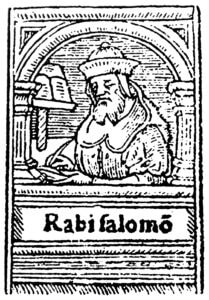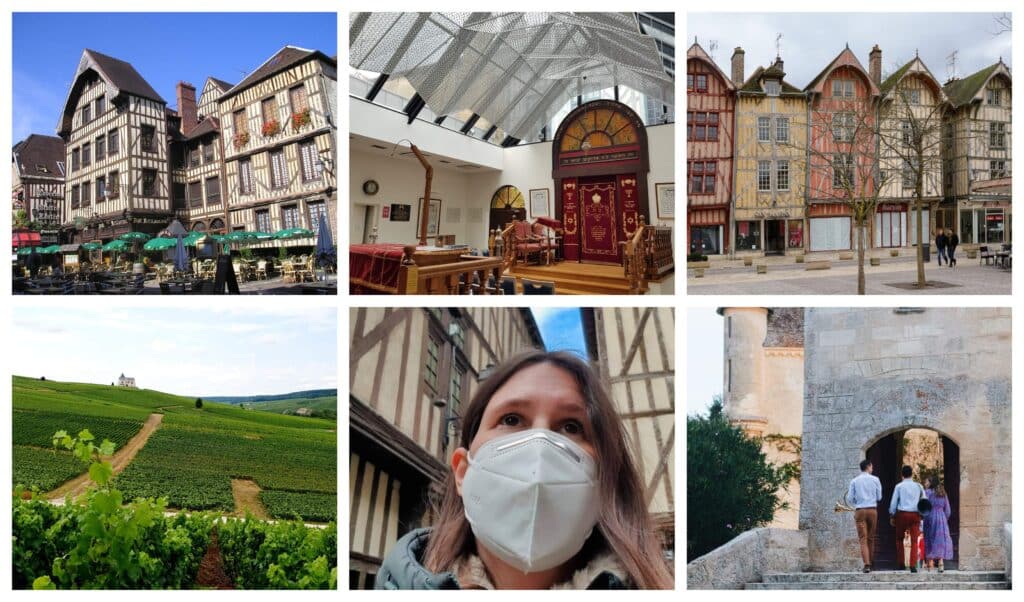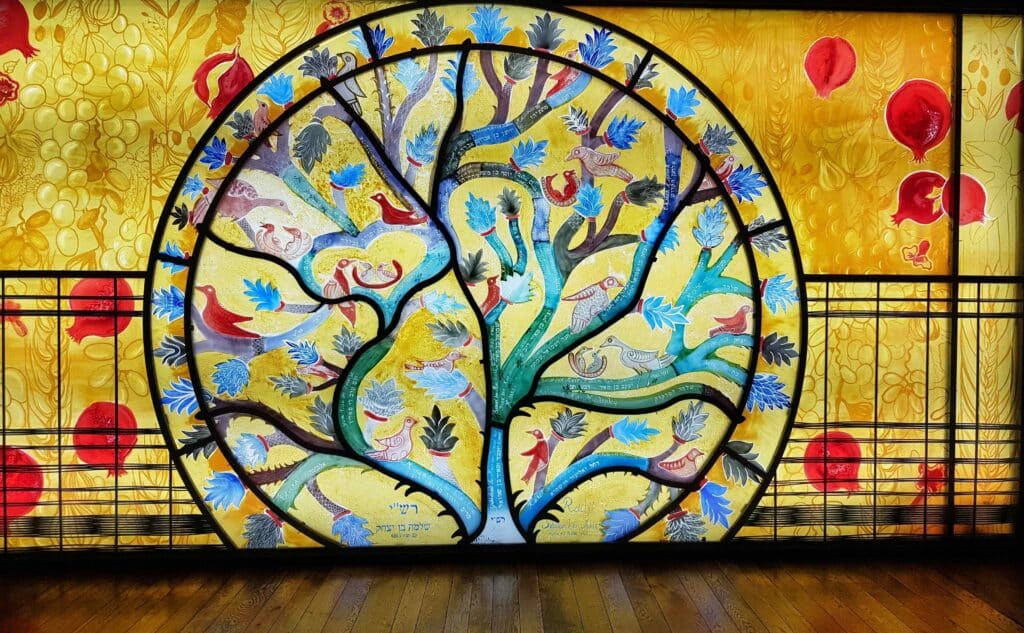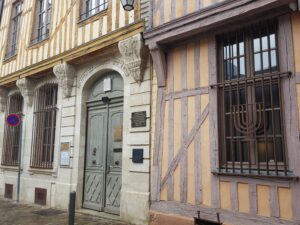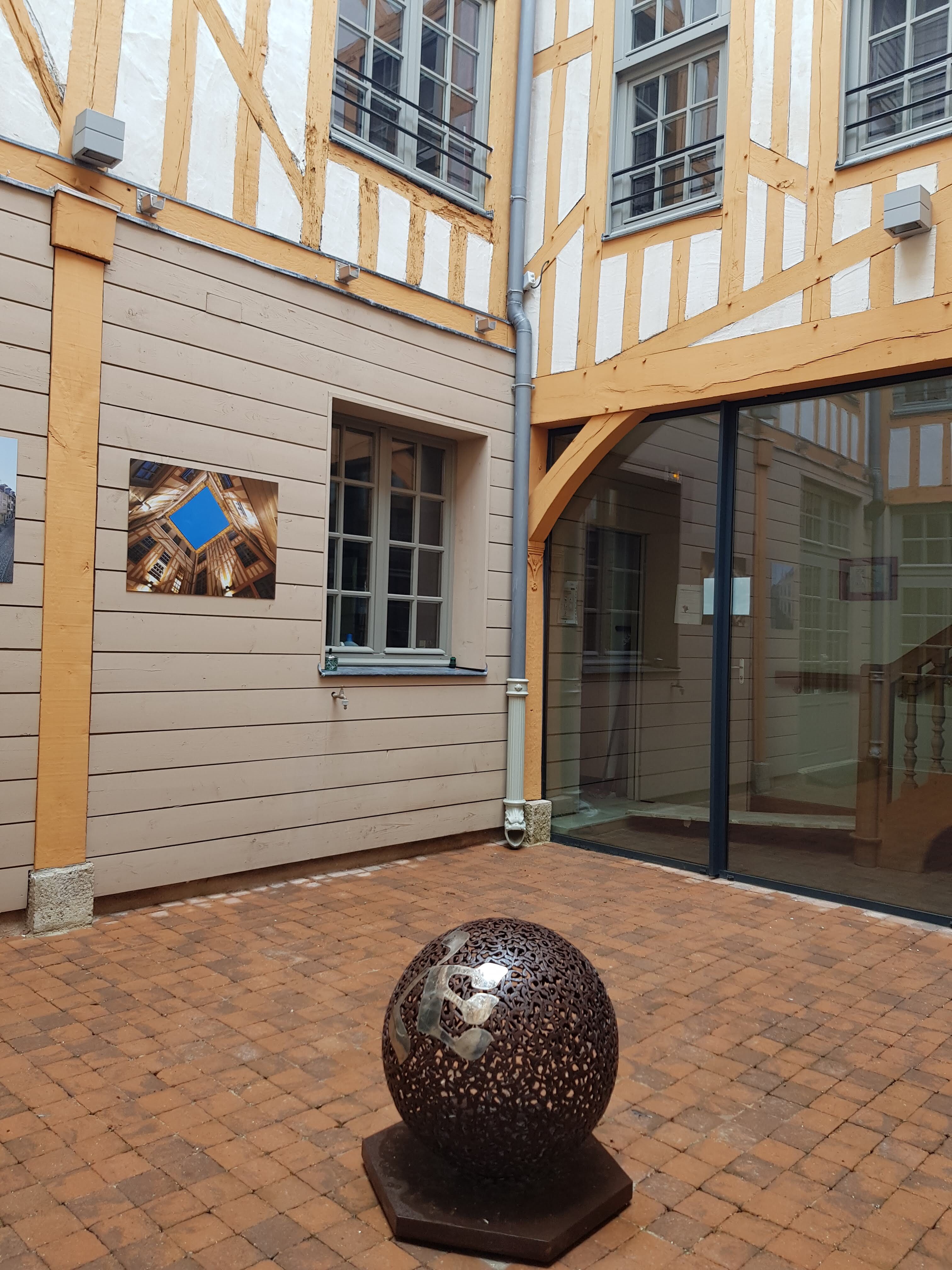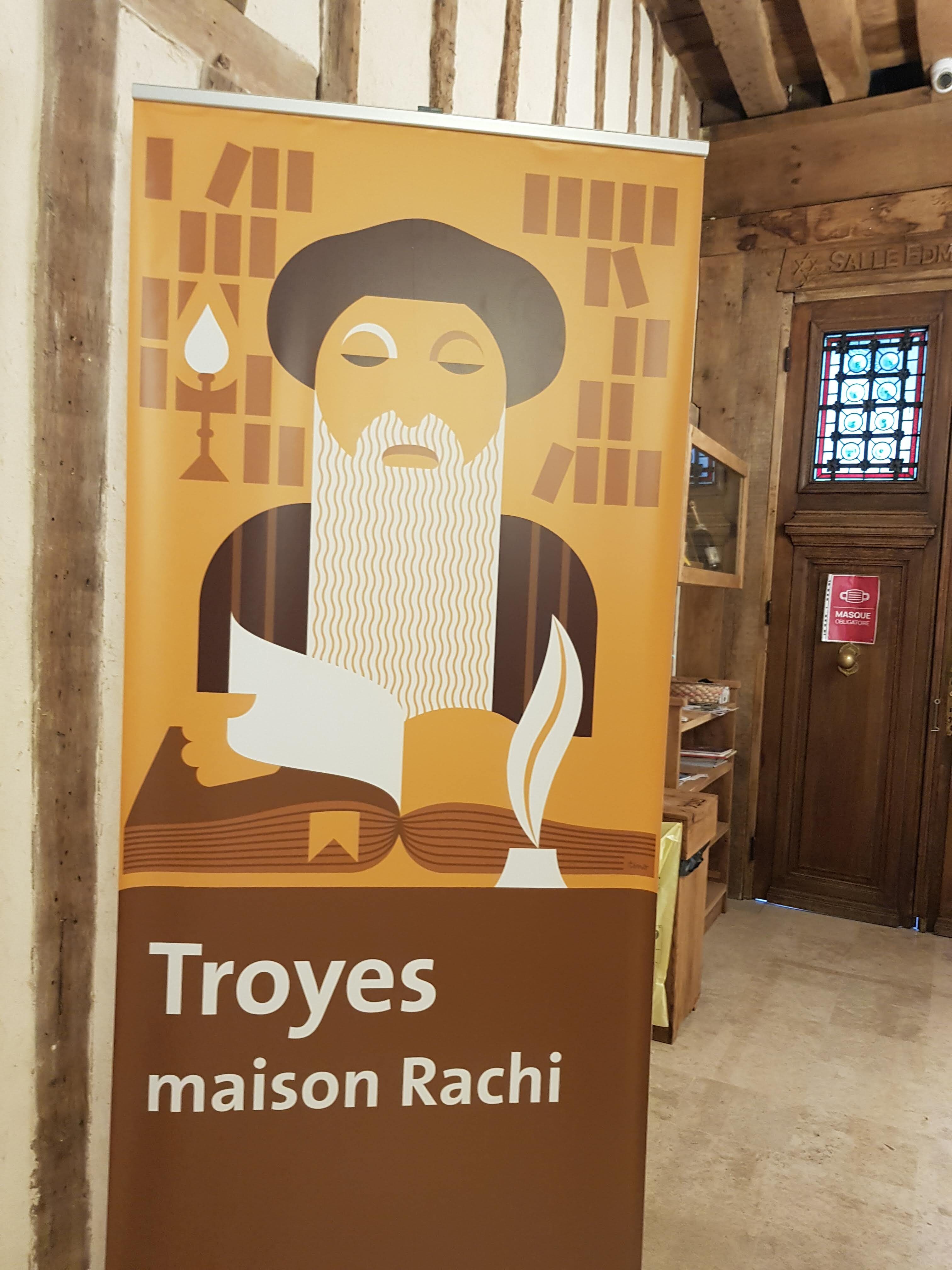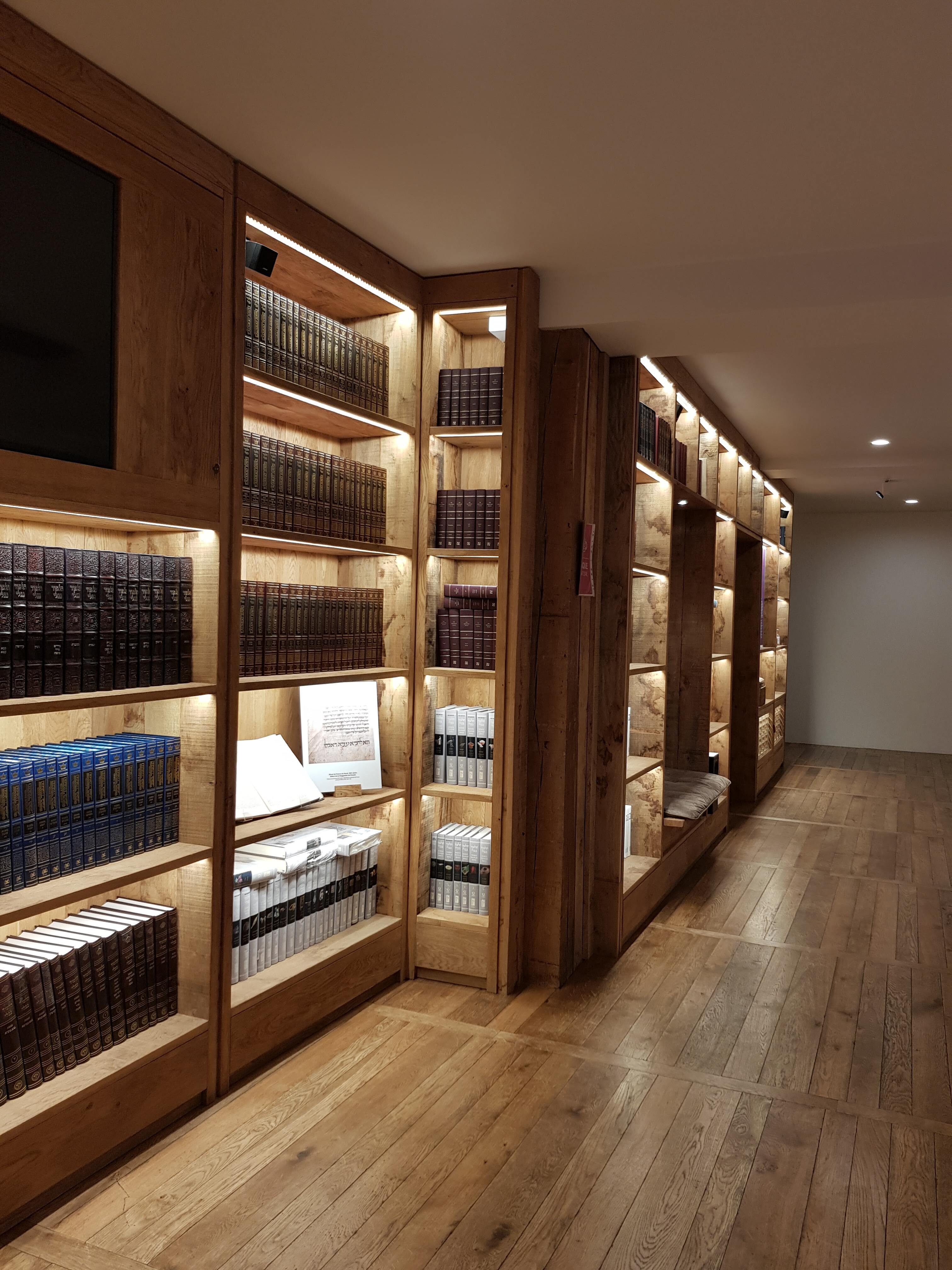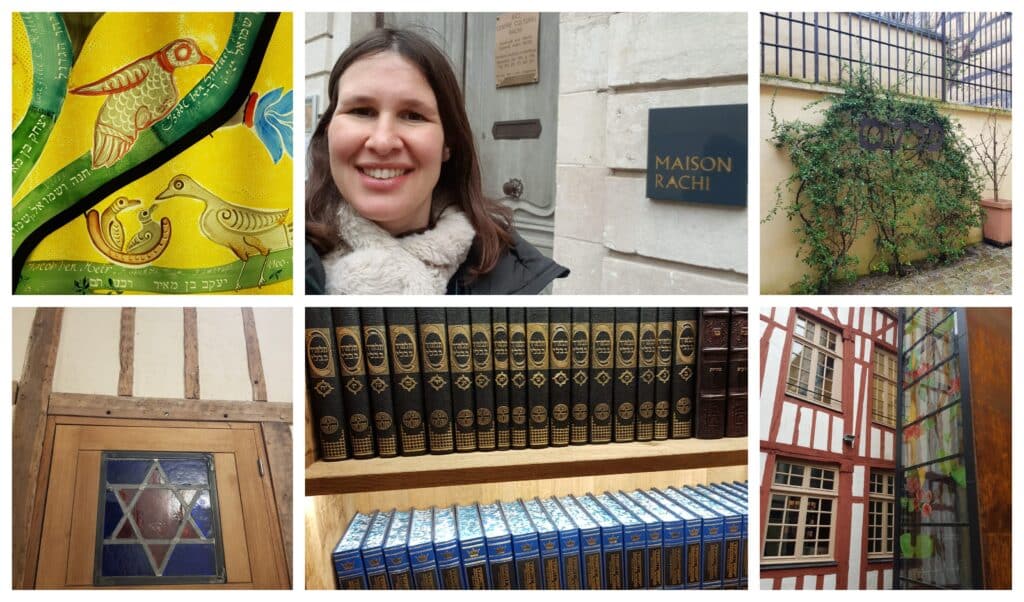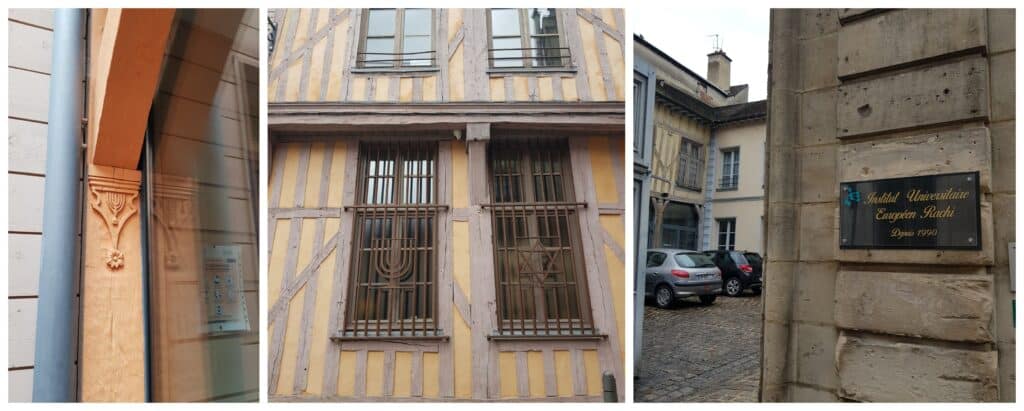When you come to Paris and you want to spend a charming and interesting day outside the capital, why not hop on the train or drive to Troyes?
Troyes is a beautiful town in the Champagne region, less than 2 hours by train (90 miles south east of Paris).
The Seine river floats through the city and you will discover the medieval center of the town, with cobblestones and timber-framed houses.
Troyes has a few beautiful old churches, a lovely art museum and of course a lot of history around the famous Rabbi and scholar, Rashi.
In French history, Troyes had become famous because of the “ Treaty of Troyes, signed in 1420. With this treaty, the queen of France, Isabeau de Bavières, betrayed her own son, by giving away France to England.
Nevertheless, 9 years later, Troyes came back into the hands of the young French King Charles VII, thanks to the brave Joan of Arc.
The counts of Champagne and Brie, who reigned from the 9th until the 13th century, were extremely tolerant. They encouraged Christian and Jewish intellectuals to develop universities.
In the Champagne and Brie region there were more than 50 flourishing Jewish communities.
Troyes was one of them.
Rashi is the most important and famous person that ever lived and worked in Troyes.
In Judaism, Rashi is the most famous commentator of the Jewish bible, the Tanakh, and the Talmud.
His name, Rashi, is the acronym for Shlomo Yitschaki. In France he is also called Salomon de Troyes.
Rashi was born in Troyes in 1040. His parents both came from illustrious Jewish scholars.
There is a legend that when his mother was pregnant, she walked through a narrow alley.
A carriage rushed through the alley and his mother had to press herself against the wall of a building to avoid being crushed. The wall formed a niche, so the mother and baby she was carrying in her belly , did not get crushed.
Rashi was an only child and already studied the Torah, the first 5 books of the Jewish Bible, when he was 5.
He got married when he was 17.
His wife Rivka gave him 3 daughters, Yocheved, Rachel and Myriam.
During the first 8 years of his marriage he lived and studied in a Yeshiva in Worms, a city in Germanty today.
So Rashi, in the first years of his marriage, would only come home to his wife and children a few times per year, on high holidays.
When he was 25, he settled in Troyes and soon became the President of the local Beth Din, the Jewish court.
In this function, he answered many questions on Jewish believe, and as he was always very clear and pedagogic.
So it was only natural that shortly afterwards, Rashi opened his own Yeshiva ( a Jewish University ) in Troyes.
One day, Rashi heard a father giving a wrong answer to his son. This gave him the idea to write record his own comments.
It is from this moment Rashi started writing his commentary on the Talmud, the Torah and the Tanakh
Rashi wrote in both ancient French and Hebrew.
His way of writing was very appealing , easy to understand and very comprehensive.
Rashi would help readers understand the Jewish bible.
For instance, when punctuation was missing, he would add to the phrase and explain the words were meant as a question, a surprise or a shoutout.
Rashi wrote both the meaning of the text as well as his interpretation.His commentary was simple, he stated that a child of 5 should be able to understand what he wrote. Rashi also explained the Jewish traditions formally life, about observing the Shabbat, eating kosher and how to relate to non-Jews.
His observations and explanations were an inspiration to several Christian scholars, like the monk Nicholas de Lyra and Abelard, the monk who went through a tragic destiny after his lover affair with Heloïse.
I talk about Abelard and Heloïse when I guide in the cemetery of Père Lachaise or when we walk by the ancient buildings on Ile de la Cité.
In Judaism, we read one chapter of the Torah every week. In one year we read the Torah from the beginning to the end.
Rashi’s writings are so clear that until today, it is customary for all Jews around the world, to read his commentary on the upcoming Torah chapter.
And, Rashi’s comments can be found in each and every Talmud book published in the world. You will always find Rashi’s commentary on every page.
As he wrote in ancient French, language specialists have used his texts to study the ancient French language.
When Rashi was 56, the Crusaders, on their way to Jerusalem, passed by Worms, where he had studied when he was young.
His friends and masters were murdered by the Crusaders. Rashi wrote several specific texts to commemorate this horrific event.
One of them is still read every year during the service of Rosh Hashan, the Jewish New Year.
In those days, Rabbis did not receive a salary, so Rashi earned his living as a vigneron , he made champagne.
When Rashi died in 1105, at the age of 65, he was buried in Troyes. We can see his tomb with a contact on site. You should hire Sam or Serge as your driver, they know the man who has the keys to the cemetery…
It is only recently that a scholar of the Sorbonne discovered an ancient map of Troyes with the location of the medieval Jewish cemetery of Troyes.
The cemetery in medieval times was located outside Troyes as it was a custom in those days.
But with the expansion of the city, the cemetery ended being in the new center of the city.
A small parking lot was built upon the cemetery in front of the local theatre.
Since the discovery of the probable location of Rashi’s tomb, a small, modern monument , with the name” Rashi” in Hebrew written on it ,stands in the middle the newly designed square.
The legacy of Rashi was continued by his three daughters, who also studied the Torah and even contributed to the interpretation of the Torah.
Rashi had always encouraged his daughters to study and many historians believe that Yocheved, Myriam and Rachel prayed with the Jewish phylacteries ( Tefilin ) every day, a custom usually reserved to men.
There is a famous phrase that Rashi once said: “ I called to my daughter Yocheved to find an answer to a complicated question about Jewish law”.
Yoceved had 6 children, 3 sons and 3 daughters.
Her 3 sons all became famous scholars, so did her husband and the husbands of her sisters.
Rashi remained the main Jewish source for explaining the Torah throughout the centuries.
That is why the very first printed book in Hebrew ever, was Rashi’s interpretation of the Torah.
It was printed in 1457.
When visiting Troyes, we make a walk though the ancient city center, in the footsteps of Rashi.
We will discover his house, his synagogue and we can even pay a tribute to him and say a kaddish when visiting the location of the ancient Jewish cemetery.
We will walk on the ancient cobblestones and admire the view to the Seine river where Rashi and his 3 daughters once walked.
The archeology and art museum, located in an ancient abbey is very beautiful, and the museum of modern art has some unexpected treasures, like paintings of Degas, Gaugain and Derain.
And of course, before heading back to Paris, we will taste some champagne, the wine originally produced by Rashi.
For shopping addicts, we can visit the local outlet stores in the fabulous shopping mall.
Just outside Troyes is a very big shopping mall, with outlet stores of France’s most famous brands.
